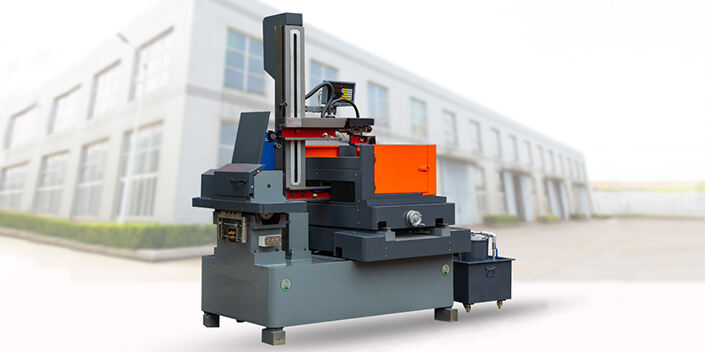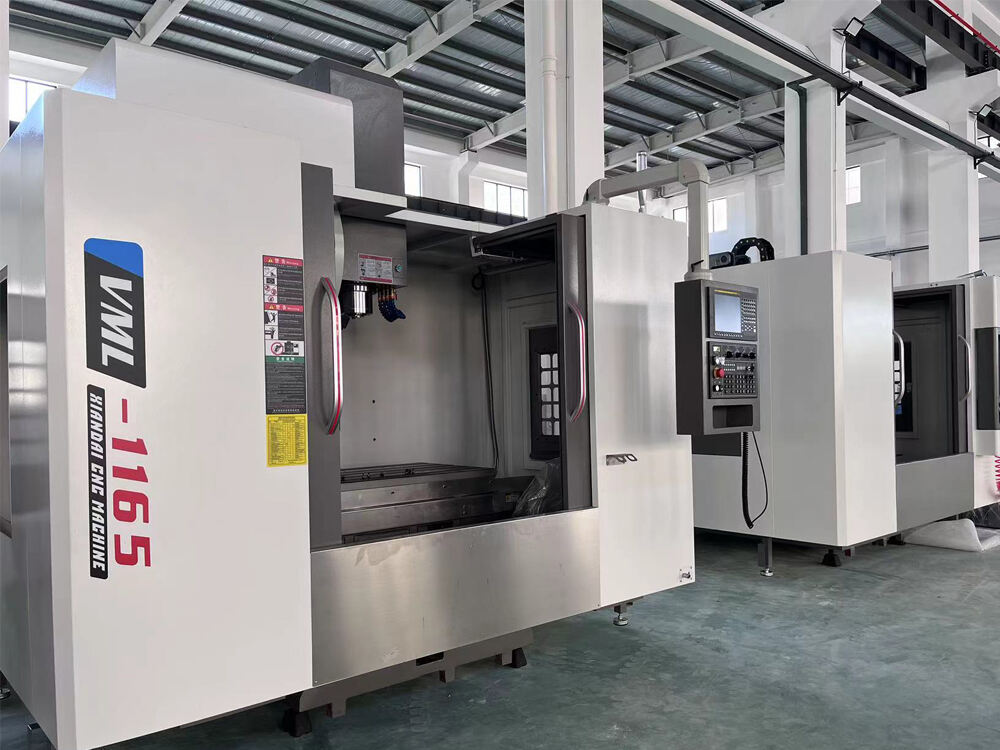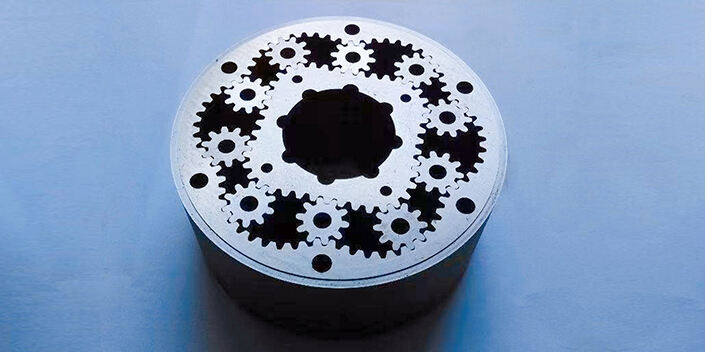บทบาทของความแม่นยำในการตัดในกระบวนการแปรรูปโลหะสมัยใหม่
การประยุกต์ใช้งานสำคัญในอุตสาหกรรมยานยนต์และอากาศยาน
ໃນໂລກອຸດສາຫະກໍາລົດ, ການຕັດແຜ່ນໂລຫະດ້ວຍຄວາມແທດເຈາະຈົງ ມີຄວາມແຕກຕ່າງຢ່າງຫຼວງຫຼາຍໃນການຜະລິດຊິ້ນສ່ວນໂລຫະທີ່ມີຄຸນນະພາບ ແລະ ສອດຄ່ອງກັບມາດຕະຖານຄວາມປອດໄພທີ່ເຂັ້ມງວດ. ຜູ້ຜະລິດອີງໃສ່ຂະບວນການນີ້ເພື່ອໃຫ້ໄດ້ຂະໜາດທີ່ແທດເຈາະຈົງ, ສິ່ງທີ່ມີຄວາມສໍາຄັນຫຼາຍຕໍ່ຄວາມທົນ ແລະ ປະສິດທິພາບຂອງລົດໃນໄລຍະຍາວ. ເມື່ອພິຈາລະນາໃນຂະແໜງການບິນ-ອາວະກາດ, ຄວາມສໍາຄັນຂອງການຕັດແຜ່ນໂລຫະດ້ວຍຄວາມແທດເຈາະຈົງກໍເພີ່ມຂື້ນອີກ, ໂດຍສະເພາະໃນການຜະລິດໂຄງສ້າງທີ່ມີນ້ໍາໜັກເບົາແຕ່ແຂງແຮງ. ບໍລິສັດການບິນໃຫ້ຄວາມສໍາຄັນກັບນ້ໍາໜັກເນື່ອງຈາກຍິ່ງເຮືອບິນເບົາພຽງໃດ, ນ້ໍາມັນເຊື້ອໄຟກໍຍິ່ງຖືກບັນທັດພຽງນັ້ນ, ຊຶ່ງຊ່ວຍປະຢັດຄ່າໃຊ້ຈ່າຍ ແລະ ຫຼຸດຜ່ອນການປ່ອຍອາຍພິດ. ດ້ວຍການນໍາໃຊ້ໂລຫະອາລູມິນຽມທີ່ມີຄວາມແຂງແຮງສູງ ແລະ ວັດສະດຸຂັ້ນສູງອື່ນໆ ຜ່ານເຕັກນິກການຕັດແຜ່ນໂລຫະດ້ວຍຄວາມແທດເຈາະຈົງ, ບໍລິສັດຂະແໜງການບິນ-ອາວະກາດສາມາດຜະລິດຊິ້ນສ່ວນທີ່ທັງໜັກແໜ້ນ ແລະ ປອດໄພ, ຊ່ວຍໃນການສ້າງຍົນທີ່ບິນໄດ້ດີຂື້ນ ແລະ ຄວບຄຸມຄ່າໃຊ້ຈ່າຍໃນການດໍາເນີນງານໃຫ້ຕໍ່າລົງ.
การเพิ่มประสิทธิภาพของวัสดุและการลดขยะ
ໃນດ້ານປະສິດທິພາບຂອງວັດຖຸດິບ, ການຕັດແຜ່ນຢ່າງແທດເຈາະນັ້ນເຮັດໃຫ້ຜູ້ຜະລິດສາມາດໃຊ້ປະໂຫຍດຈາກຊັບພະຍາກອນໃຫ້ໄດ້ຫຼາຍທີ່ສຸດ ໃນຂະນະທີ່ສາມາດບັນລຸມາດຕະຖານການວັດແທກທີ່ແນ່ນອນທຸກຄັ້ງ. ຜົນປະໂຫຍດນັ້ນບໍ່ໄດ້ຢຸດຢູ່ທີ່ການປັບປຸງຄຸນນະພາບຂອງຜະລິດຕະພັນເທົ່ານັ້ນ. ໂຮງງານຜະລິດຈະເຫັນຂີ້ເຫຍື້ອທີ່ເຫຼືອຈາກການຜະລິດຫຼຸດລົງ, ສິ່ງທີ່ຫມາຍເຖິງຂີ້ເຫຍື້ອທີ່ຖືກສົ່ງໄປຖິ້ມໃນທີ່ຖິ້ມຂີ້ເຫຍື້ອກໍ່ຫຼຸດລົງຕາມໄປດ້ວຍ. ບໍລິສັດທີ່ປັບປຸງຂະບວນການຕັດແຜ່ນຂອງຕົນເອງມັກຈະພົບວ່າພວກເຂົາປະຢັດຄ່າໃຊ້ຈ່າຍໃນການຜະລິດ ແລະ ໄດ້ຜະລິດຕະພັນທີ່ໃຊ້ໄດ້ຫຼາຍຂຶ້ນຈາກແຕ່ລະຊຸດວັດຖຸດິບ. ສິ່ງທີ່ຫນ້າສົນໃຈແມ່ນເທກໂນໂລຊີດັ່ງກ່າວຍັງສາມາດສະໜັບສະໜູນການເຄື່ອນໄຫວດ້ານສິ່ງແວດລ້ອມອີກດ້ວຍ. ດ້ວຍການຫຼຸດຜ່ອນວັດຖຸດິບທີ່ຖືກຂີ້ເຫຍື້ອໃນຂະນະການປຸງແຕ່ງ, ທັງໝົດຂະບວນການກໍ່ກາຍເປັນມິດຕໍ່ສິ່ງແວດລ້ອມຫຼາຍຂຶ້ນ. ບັນດາໂຮງງານຜະລິດໂລຫະທີ່ຮັບເອົາວິທີການເຫຼົ່ານີ້ບໍ່ພຽງແຕ່ກຳລັງຫຼຸດຜ່ອນຄ່າໃຊ້ຈ່າຍເທົ່ານັ້ນ, ແຕ່ຍັງກຳລັງຊ່ວຍຮັກສາຊັບພະຍາກອນທຳມະຊາດໄວ້ໃນອຸດສະຫະກຳທີ່ປະສິດທິພາບເຄີຍເປັນພະຍານມາຕະຫຼອດ.
ການວິເຄາະຄ່າໃຊ້ແລະຄວາມມື້ງຂອງການປະຕິບັດ
ຄ່າໃຊ້ຂອງເຄື່ອງມືຕົ້ນໆແລະປັດຈັກທີ່ມີຜົນກັບລົງທຶນ
ການຄວບຄຸມຕົ້ນທຶນວັດຖຸດິບ ແລະ ການຕິດຕາມບັນຫາຫ່ວງສາຍການສະໜອງ ມີຄວາມສຳຄັນຫຼາຍຕໍ່ບໍລິສັດທີ່ດຳເນີນທຸລະກິດດ້ານການຕັດແຜ່ນວັດຖຸ. ລາຄາວັດຖຸດິບມີການຜັນຜຸນສູງ-ຕ່ຳຫຼາຍໃນປັດຈຸບັນ ສະນັ້ນການຄວບຄຸມສະຕ໋ອກຈຶ່ງເປັນສິ່ງຈຳເປັນ. ການສັ່ງຊື້ໃຫ້ຖືກຕ້ອງ ຕ້ອງເຂົ້າໃຈຢ່າງຊັດເຈັນວ່າຕ້ອງການຫຍັງ ແລະ ເວລາໃດທີ່ຕ້ອງການ. ວິທີການຄຸ້ມແຂງໃນຫ່ວງສາຍການສະໜອງຊ່ວຍໃຫ້ວັດຖຸດິບມາຮອດພຽງເວລາທີ່ຕ້ອງການ ແທນທີ່ຈະເກັບໄວ້ໃນສາງເປັນເວລາດົນນານ. ຜົນປະໂຫຍດບໍ່ພຽງແຕ່ຢູ່ທີ່ການປະຢັດເງິນເທົ່ານັ້ນ ແຕ່ຍັງຢູ່ທີ່ການຮັບປະກັນວ່າການຜະລິດສາມາດດຳເນີນໄປຢ່າງສະເໝີພາບ. ການສັງເກດເບິ່ງສິ່ງທີ່ເກີດຂຶ້ນໃນຕະຫຼາດທົ່ວໂລກ ຍັງສາມາດໃຫ້ຂໍ້ມູນລ່ວງໜ້າກັບຜູ້ຜະລິດກ່ຽວກັບທິດທາງຂອງລາຄາໃນອະນາຄົດ. ຄວາມເຂົ້າໃຈຕະຫຼາດແບບນີ້ ຈະຊ່ວຍໃຫ້ບໍລິສັດສາມາດປັບແຕ່ງແຜນການຊື້ກ່ອນທີ່ບັນຫາຈະເກີດຂຶ້ນໃນຂະບວນການຜະລິດ.
ການເຮັດວຽກ vs. ອຸດมະທຳໃນສາຍການຂັດ
ເມື່ອເບິ່ງເຖິງດ້ານເສດຖະກິດຂອງເສັ້ນຕັດ, ບໍລິສັດຕ້ອງຕັດສິນໃຈຢ່າງຍາກລະຫວ່າງການພິງໃສ່ແຮງງານຄົນ ຫຼື ການລົງທຶນໃນການເຮັດອັດຕະໂນມັດ. ຕົວເລກບອກເລື່ອງທີ່ຊັດເຈນ: ການເຮັດອັດຕະໂນມັດຫຼຸດຄ່າໃຊ້ຈ່າຍດ້ານແຮງງານໃນໄລຍະຍາວ ແລະ ສາມາດເພີ່ມກຳໄລໄດ້ໃນໄລຍະຍາວ. ຕົວຢ່າງເຊັ່ນ: ເຄື່ອງຈັກ CNC ມັນສາມາດຕັດວັດສະດຸໄດ້ຖືກຕ້ອງຫຼາຍກ່ວາຄົນສ່ວນໃຫຍ່ສາມາດເຮັດດ້ວຍມື, ຈຶ່ງຫຼຸດຜົນຜິດພາດທີ່ເສຍເງິນ. ແຕ່ການເຮັດໃຫ້ການເຮັດອັດຕະໂນມັດຖືກຕ້ອງບໍ່ໄດ້ເປັນພຽງການຊື້ເຄື່ອງຈັກເທົ່ານັ້ນ. ບໍລິສັດຈະຕ້ອງໃຊ້ເວລາຝຶກອົບຮົມພະນັກງານທີ່ມີຢູ່ໃຫ້ສາມາດຮັບຜິດຊອບໃໝ່ໆພ້ອມກັບເຄື່ອງຈັກເຫຼົ່ານັ້ນ. ພະນັກງານບາງຄົນອາດຈະຕ້ອງຮຽນຮູ້ທັກສະທີ່ແຕກຕ່າງທັງໝົດ ໃນຂະນະທີ່ຄົນອື່ນອາດຈະມາເຮັດໜ້າທີ່ຕິດຕາມລະບົບແທນການເຮັດວຽກຊ້ຳໆທັງມື້. ວິທີການແບບນີ້ຈະເຮັດໃຫ້ພະນັກງານທີ່ມີປະສົບການຍັງຄົງມີຄຸນຄ່າ ເຖິງແມ່ນວ່າເຕັກໂນໂລຊີຈະປ່ຽນວິທີການເຮັດວຽກໃນໂຮງງານຜະລິດ.
ການພັດທະນາເทັກນົອລົジーສ້າງຄວາມມີຜົນສຳເລັດ
ການຕັດໂດຍເສື່ອແລະການປະສົມປະສານ EDM ໃນລາຍການສະເພາະ
ເມື່ອການຕັດດ້ວຍເລເຊີຖືກນຳມາປະສົມກັບເຕັກໂນໂລຊີການກັດເຊື່ອງດ້ວຍໄຟຟ້າ (EDM) ມັນກຳລັງປ່ຽນວິທີການເຮັດວຽກຂອງເສັ້ນຕັດໃນວັດສະດຸຕ່າງປະເພດ. ຜູ້ຜະລິດໃນປັດຈຸບັນມີທາງເລືອກທີ່ດີຂຶ້ນເມື່ອຕ້ອງຈັດການກັບຮູບຮ່າງທີ່ສັບສົນຍ້ອນວ່າພວກເຂົາສາມາດຮັກສາຄວາມຖືກຕ້ອງສູງທີ່ຕ້ອງການໃນຂະແໜງຕ່າງໆເຊັ່ນຍົນ ແລະ ລົດໄດ້. ສຳລັບໂລຫະອາລູມິນຽມ ແລະ ເຫຼັກເອົາເປັນຕົວຢ່າງ, ໂຮງງານໃນປັດຈຸບັນກຳລັງສາມາດຕັດໄດ້ຢ່າງແທ້ຈິງເຊິ່ງເກືອບບໍ່ເຫຼືອຂີ້ເສຍເລີຍ ແລະ ສົ່ງຜົນໃຫ້ເວລາການຜະລິດໄວຂຶ້ນ. ບາງການສຶກສາຈາກວາລະສານຂອງອຸດສາຫະກຳສະແດງໃຫ້ເຫັນວ່າຮ້ານທີ່ນຳໃຊ້ເລເຊີ ແລະ EDM ຮ່ວມກັນສາມາດເພີ່ມຜົນຜະລິດໄດ້ຫຼາຍເທົ່າຕົວເມື່ອທຽບໃສ່ກັບກ່ອນໜ້ານີ້ ແຕ່ຍັງຮັກສາມາດຕະຖານຄຸນນະພາບໄດ້ເຊັ່ນເກົ່າ. ບໍລິສັດທີ່ຕ້ອງການຢູ່ໃນການແຂ່ງຂັນຂອງຕະຫຼາດໃນມື້ນີ້ຈຳເປັນຕ້ອງພິຈາລະນາການປັບປຸງດ້ານເຕັກໂນໂລຊີແບບນີ້ເພື່ອຈະສາມາດຕອບສະໜອງຄວາມຕ້ອງການທີ່ເພີ່ມຂຶ້ນສຳລັບຊິ້ນສ່ວນທີ່ຕ້ອງການຄວາມຖືກຕ້ອງສູງ.
ການພັດທະນາໃນ CNC Machining ແລະ Smart Manufacturing
ການກັດເຈາະດ້ວຍເຄື່ອງ CNC ໄດ້ມີການພັດທະນາຫຼາຍໃນຊ່ວງເວລາທີ່ຜ່ານມາ ເຊິ່ງເຮັດໃຫ້ສາມາດສ້າງແບບແຜນທີ່ລະອຽດຫຼາຍຂຶ້ນໃນຂະນະທີ່ດຳເນີນການຜະລິດຕະດຽວທີ່ສອດຄ່ອງກັບສິ່ງທີ່ຕູ້ຄ້າຕ້ອງການ. ດ້ວຍການຄວບຄຸມເຄື່ອງຈັກທີ່ດີຂຶ້ນ ພວກເຮົາເຫັນວ່າມີການຕັດທີ່ສະອາດຂຶ້ນ ແລະ ວັດສະດຸຖືກຂີ້ເຫຍື້ອຍ້ອຍໜ້ອຍລົງກ່ວາທີ່ຜ່ານມາ. ໃນຂະນະດຽວກັນ ໂຮງງານຜະລິດກໍ່ເລີ່ມນຳເອົາເຕັກໂນໂລຊີອັດສະລິຍ ເຊັ່ນ ເຊັນເຊີ IoT ແລະ ລະບົບ AI ພື້ນຖານເຂົ້າໃນຂະບວນການຜະລິດ. ສິ່ງນີ້ໝາຍເຖິງຫຍັງ? ເຄື່ອງຈັກເສຍຫຼາຍຂຶ້ນ ແລະ ຊ່າງເຕັກນິກສາມາດຄາດການວ່າຊິ້ນສ່ວນຈະເສຍກ່ອນທີ່ມັນຈະເກີດຂື້ນ ຊຶ່ງຊ່ວຍປະຢັດເວລາ ແລະ ຄ່າໃຊ້ຈ່າຍ. ບໍລິສັດທີ່ລົງທຶນໃນເຕັກໂນໂລຊີເຫຼົ່ານີ້ມັກຈະສາມາດອອກຜະລິດຕະພັນໄດ້ໄວຂຶ້ນ ແລະ ດຳເນີນການໂຮງງານຜະລິດໄດ້ມີປະສິດທິພາບຫຼາຍຂື້ນໂດຍລວມ.
ທື້ແຫ່ງຊ່ວງທີ່ແລະຄວາມປະສິດທິພາບເສິ໙
ຄວາມຕ້ອງການທົ່ວໂລກສໍາລັບສ່ວນປະກອບເຫຼົ່າງທີ່ມີຄວາມຖືກຕ້ອງສູງ
ຄວາມສົນໃຈໃນລະດັບໂລກຕໍ່ສ່ວນປະກອບໂລຫະຄວາມແມ່ນຍໍາສູງຍັງຄົງເຕີບໂຕຕໍ່ເນື່ອງຈາກຜູ້ຜະລິດທົ່ວທຸກແຫ່ງກໍາລັງຊອກຫາວິທີແກ້ໄຂດ້ານເຕັກໂນໂລຊີທີ່ດີຂື້ນ. ອຸດສາຫະກໍາຕັ້ງແຕ່ຜູ້ຜະລິດລົດໄຖນາຈົນຮອດຜູ້ຜະລິດຍົນກໍຕ້ອງການຊິ້ນສ່ວນທີ່ສາມາດປະກອບເຂົ້າກັນໄດ້ຢ່າງແມ່ນຍໍາ. ການຄົ້ນຄວ້າຕະຫຼາດສະແດງໃຫ້ເຫັນວ່າທຸລະກິດຕັດແຜ່ນໂລຫະຄວາມແມ່ນຍໍາຈະມີການເຕີບໂຕຢ່າງໄວວຸ້ນໃນໄລຍະມາເຖິງນີ້ ເນື່ອງຈາກການພັດທະນາເຕັກໂນໂລຊີໃໝ່ໆ ແລະ ຄວາມຕ້ອງການທີ່ເຂັ້ມແຂງຂື້ນຈາກຫຼາຍຂົງເຂດ. ປະເທດຕ່າງໆໃນເອເຊຍ ແລະ ເອີຣົບຕາເວັນອອກກໍກໍາລັງລົງທຶນຢ່າງໜັກໜ່ວຍໃນການປັບປຸງໂຮງງານຂອງເຂົາເຈົ້າດ້ວຍເຄື່ອງຈັກທີ່ທັນສະໄໝ ເຊິ່ງອະທິບາຍເຖິງຄວາມຕ້ອງການໃນລະດັບໂລກທີ່ເພີ່ມຂື້ນຢ່າງຫຼວງຫຼາຍ. ບໍລິສັດຕ່າງໆທີ່ຕ້ອງການຢູ່ຂ້າງໜ້າຄູ່ແຂ່ງກໍກໍາລັງຫັນມາໃຊ້ເຄື່ອງມືທີ່ທັນສະໄໝເຊັ່ນ: ເຄື່ອງຕັດດ້ວຍແສງເລເຊີ ແລະ ລະບົບ EDM. ເຄື່ອງຈັກເຫຼົ່າເຈົ້າເຮົາເຫຼົ່ານີ້ບໍ່ແມ່ນພຽງແຕ່ເຄື່ອງມືທີ່ເບິ່ງດີເທີ່ຍມເທົ່ານັ້ນ ແຕ່ຍັງເປັນການລົງທຶນທີ່ຈໍາເປັນເພື່ອຮັກສາການແຂ່ງຂັນໃນສະພາບການຜະລິດທີ່ແຂ້ງແຮງໃນປັດຈຸບັນ.
ການແກ້ວໄຂ່, ຄວາມຖືກຕ້ອງ, ແລະ ການແນະນຳການເພີ່ມຂຶ້ນໃນອະນາຄົມ
ນະໂຍບາຍອາກອນໃນມື້ນີ້ມີຜົນກະທົບຕໍ່ການຕັ້ງລາຄາ ແລະ ສິ່ງທີ່ບໍລິສັດຕ່າງໆສາມາດແຂ່ງຂັນກັນໃນການຜະລິດໂລຫະ. ເມື່ອເບິ່ງເຖິງການດຳເນີນງານທີ່ແທ້ຈິງແລ້ວ, ຜູ້ຈັດການໂຮງງານຕ່າງກໍາລັງປັບປຸງວິທີການຂອງເຂົາເຈົ້າຢູ່ສະເໝີເພື່ອຈັດການກັບຕົ້ນທຶນວັດຖຸດິບທີ່ມີການປ່ຽນແປງ ແລະ ປະເຊີນໜ້າກັບຄູ່ແຂ່ງຂັນໃນລະດັບໂລກ. ໃນຂະນະດຽວກັນ, ການເຄື່ອນໄຫວດ້ານສິ່ງແວດລ້ອມກໍ່ໄດ້ກາຍເປັນເລື່ອງທີ່ມີຄວາມສຳຄັນຫຼາຍຂຶ້ນສຳລັບບັນດາທຸລະກິດທີ່ຕ້ອງການຢູ່ໃນການແຂ່ງຂັນ. ໂຮງງານຫຼາຍແຫ່ງໃນປັດຈຸບັນກຳລັງປະຕິບັດນະໂຍບາຍທີ່ເປັນມິດຕໍ່ສິ່ງແວດລ້ອມ ເຖິງແມ່ນວ່າຈະມີຄ່າໃຊ້ຈ່າຍໃນເບື້ອງຕົ້ນຍ້ອນວ່າການປ່ຽນແປງເຫຼົ່ານີ້ມັກຈະໃຫ້ຜົນຕອບແທນໃນໄລຍະຍາວຜ່ານການຫຼຸດຜ່ອນຄ່າໃຊ້ຈ່າຍ ແລະ ການຢືນຢູ່ໃນຂອບເຂດຂອງກົດລະບຽບ. ໃນອະນາຄົດ, ນັກວິເຄາະອຸດສາຫະກຳຄາດໝາຍວ່າບັນດາບໍລິສັດທີ່ສາມາດປັບໂຕໄດ້ຢ່າງໄວວາເມື່ອເງື່ອນໄຂດ້ານເສດຖະກິດ ຫຼື ກົດລະບຽບມີການປ່ຽນແປງ ຈະຢູ່ລອດໄດ້ດີທີ່ສຸດ. ບັນດາບໍລິສັດທີ່ສ້າງລະບົບການຜະລິດທີ່ຍືດຫຍຸ່ນໃນປັດຈຸບັນ ກໍ່ມີໂອກາດດີທີ່ຈະຜ່ານສິ່ງທີ່ຈະເກີດຂຶ້ນຕໍ່ໄປໃນອະນາຄົດ ໃນຂະນະທີ່ຍັງສາມາດຂະຫຍາຍທຸລະກິດໄດ້ຢ່າງຍືນຍົງ.





